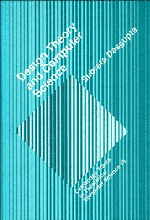Book contents
- Frontmatter
- Contents
- Preface
- Acknowledgements
- Part I The Architectonics of Design
- 1 The Inadequacy of Definitions
- 2 Design as the Initiation of Change
- 3 The Nature of Design Problems
- 4 The Form of Design Solutions
- 5 The Evolutionary Structure of Design Processes
- Part II Design Paradigms
- Part III Design and Science
- References
- Index
5 - The Evolutionary Structure of Design Processes
Published online by Cambridge University Press: 10 February 2010
- Frontmatter
- Contents
- Preface
- Acknowledgements
- Part I The Architectonics of Design
- 1 The Inadequacy of Definitions
- 2 Design as the Initiation of Change
- 3 The Nature of Design Problems
- 4 The Form of Design Solutions
- 5 The Evolutionary Structure of Design Processes
- Part II Design Paradigms
- Part III Design and Science
- References
- Index
Summary
THE SATISFICING NATURE OF DESIGN DECISIONS
In chapter 3 (section 3.4) I introduced the concept of bounded rationality. As noted there, bounded rationality is a model of rationality proposed by Simon (1976, 1982) that recognizes the severe limits on the cognitive and information processing capabilities of the decision making agent. Such limitations may arise in a variety of ways: the various factors or parameters affecting a decision may be so complex or they may interact in such complicated ways the agent may be unable to decide the best course of action; or the agent may simply not know all the alternative courses of action; or even when all the factors or alternatives are known fully, the cost of computing the best possible choice may be far too prohibitive.
Bounded rationality explains why design problems are so very often formulated in an incomplete manner (see section 3.4, chapter 3). But it has an even more profound consequence for the design process itself, and for the nature of design solutions.
Example 5.1
To understand this, consider a computer architect who has been given a particular set of initial requirements and is required to design a micro-architecture that meets these requirements. A computer's micro-architecture, it will be recalled (see foot-note 6, chapter 3) refers to the internal architecture of the computer as seen by the microprogrammer (see also Dasgupta 1989a, chapter 1).
We shall further assume that the initial requirements, though sparse, are quite precise and complete.
- Type
- Chapter
- Information
- Design Theory and Computer Science , pp. 62 - 130Publisher: Cambridge University PressPrint publication year: 1991



